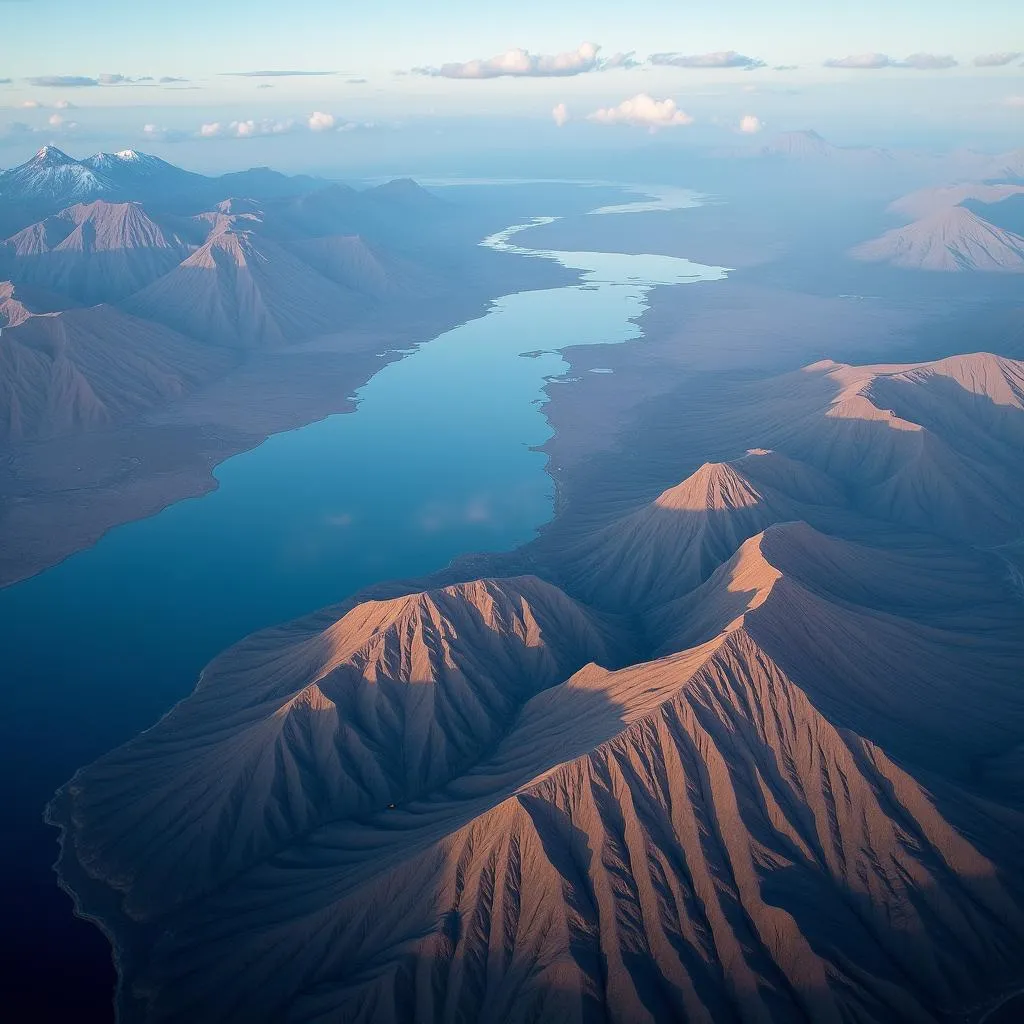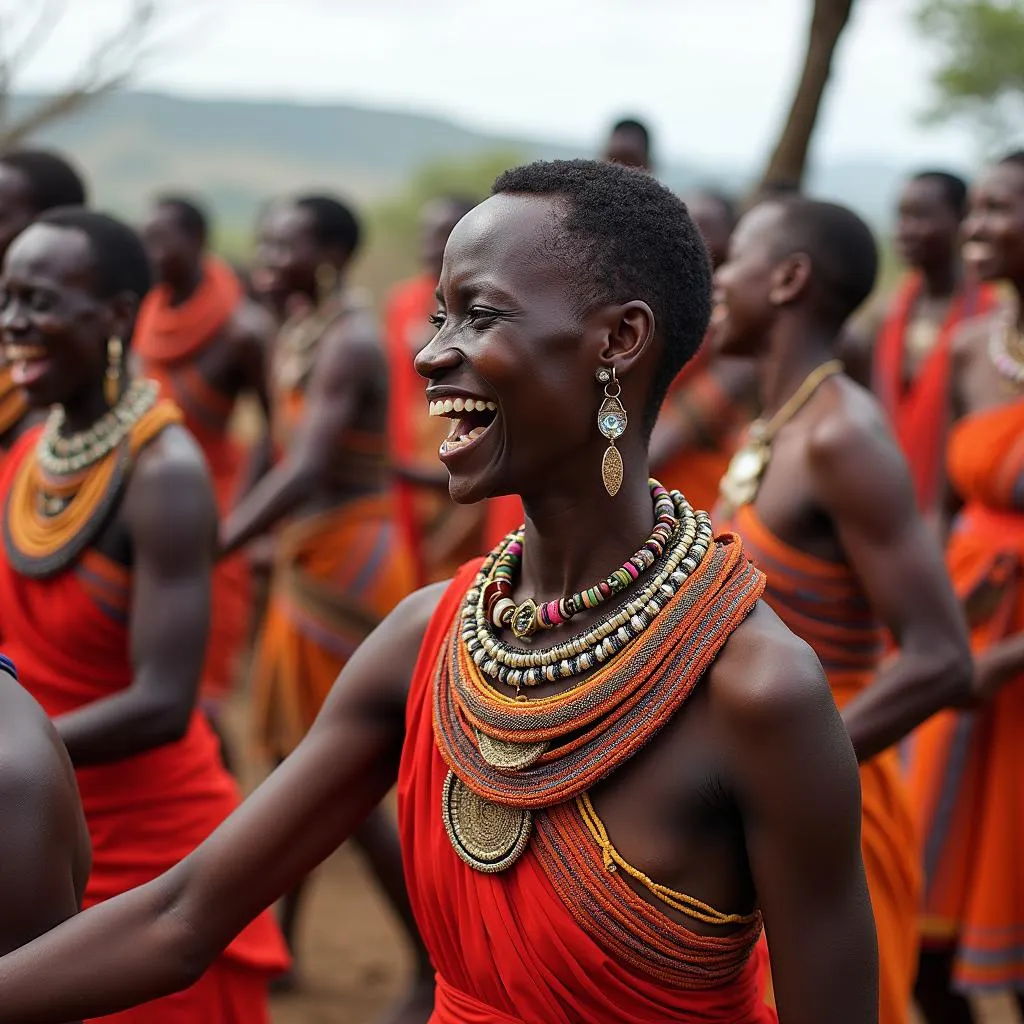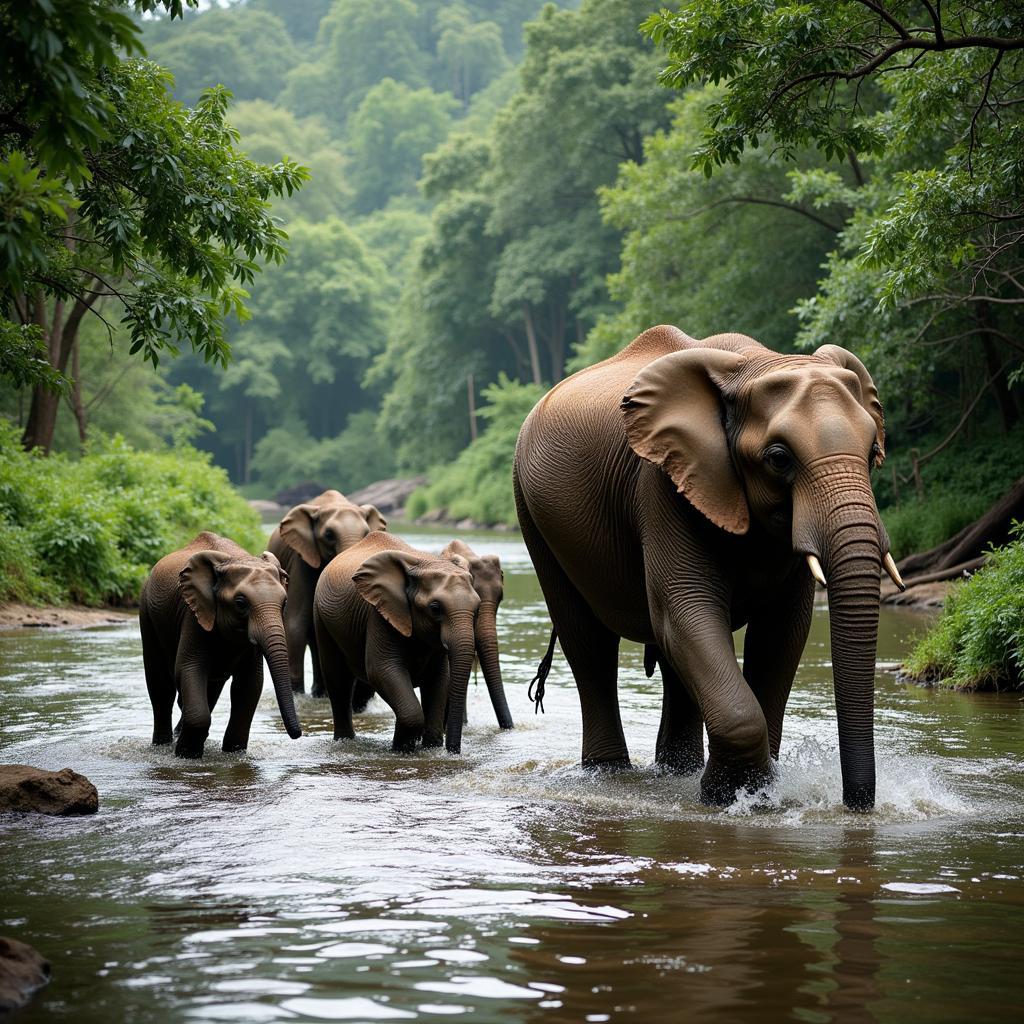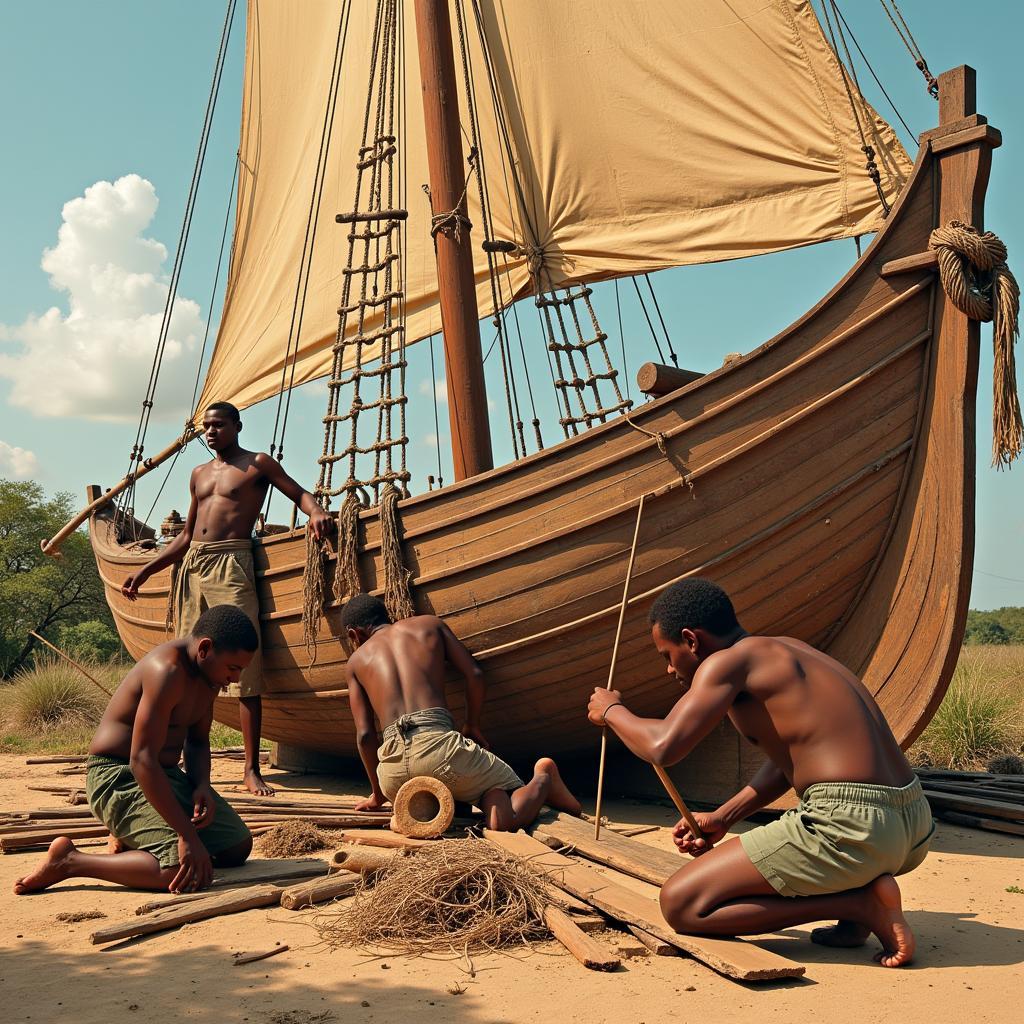The African Great Lakes Rift Valley: A Natural Wonder
The African Great Lakes Rift Valley, a geological marvel spanning thousands of kilometers, is a testament to the awe-inspiring forces that have shaped our planet. This extraordinary rift, where the Earth’s crust is literally pulling apart, is home to stunning landscapes, unique ecosystems, and a rich tapestry of human cultures.
A Geological Masterpiece: Formation and Features
The African Great Lakes Rift Valley is a result of plate tectonics, a process where the Earth’s massive crustal plates move and interact. Over millions of years, the African Plate has been slowly splitting, creating this dramatic rift system. The process is ongoing, as evidenced by volcanic activity and earthquakes still occurring today. This continuous geological dance has sculpted a landscape of towering volcanoes, vast savannas, and, of course, the iconic Great Lakes of Africa.
Speaking of the lakes, they are more than just bodies of water; they are vital ecosystems teeming with life. Lake Victoria, the largest tropical lake in the world, along with Lake Tanganyika, the longest freshwater lake on Earth, and Lake Malawi, renowned for its incredible diversity of cichlid fish, are just a few examples. These lakes provide sustenance, transportation, and livelihoods for millions of people.
 Aerial View of the African Rift Valley
Aerial View of the African Rift Valley
A Biodiversity Hotspot: Life in the Rift Valley
The varied habitats within the African Great Lakes Rift Valley support an astonishing array of plant and animal life. From the lush rainforests clinging to the slopes of volcanic mountains to the arid savannas stretching as far as the eye can see, each ecosystem harbors unique species. The region is home to some of the world’s most iconic wildlife, including elephants, lions, giraffes, and zebras.
The lakes themselves are biodiversity hotspots, particularly for fish. The cichlid fish of Lake Malawi, for instance, display an astounding array of colors, shapes, and behaviors, a testament to the power of evolution in isolated environments. This unique biodiversity is not just fascinating; it plays a crucial role in maintaining the ecological balance of the region.
Cultural Crossroads: People of the Rift Valley
The African Great Lakes Rift Valley has been a cradle of human evolution and cultural development for millennia. Evidence suggests that some of the earliest humans walked these lands, leaving behind traces of their existence in the form of fossils and ancient tools. Today, the region is home to a diverse array of ethnic groups, each with its own unique language, traditions, and ways of life.
From the Maasai pastoralists of Kenya and Tanzania, known for their distinctive red clothing and cattle herding practices, to the agricultural communities cultivating the fertile volcanic soils, the people of the Rift Valley have forged deep connections with their environment. This intricate relationship between people and place is a testament to human adaptability and resilience.
 Traditional Celebration in the African Rift Valley
Traditional Celebration in the African Rift Valley
Challenges and Conservation Efforts
Despite its natural splendor and cultural richness, the African Great Lakes Rift Valley faces a number of challenges. Population growth, deforestation, pollution, and climate change all threaten the delicate balance of this unique ecosystem. The impacts are already being felt, with some species facing extinction and water resources becoming increasingly scarce.
However, there is hope. Numerous organizations and communities are working tirelessly to protect the Rift Valley’s natural heritage and promote sustainable development. From establishing national parks and wildlife reserves to implementing eco-tourism initiatives and empowering local communities, these efforts are crucial for ensuring the future of this incredible region.
Experiencing the African Great Lakes Rift Valley
The African Great Lakes Rift Valley is not just a place to read about; it’s a destination that begs to be experienced. Whether you’re interested in wildlife safaris, trekking through stunning landscapes, or immersing yourself in the rich cultural tapestry, the Rift Valley has something to offer every traveler.
Imagine yourself embarking on a game drive through the Serengeti, witnessing the awe-inspiring spectacle of the Great Migration. Or perhaps you envision yourself hiking to the summit of Mount Kilimanjaro, the highest peak in Africa, and taking in the panoramic views of the Rift Valley below.
Beyond the iconic landscapes and wildlife, the true heart of the Rift Valley lies in its people. Engaging with local communities, learning about their traditions, and hearing their stories firsthand will undoubtedly be one of the most enriching aspects of your journey.
The African Rift Valley map illustrates the vastness of this geological wonder and can help you visualize the scope of its reach. This extraordinary region offers a glimpse into the raw power of nature, the remarkable diversity of life, and the enduring spirit of humanity.
Conclusion
The African Great Lakes Rift Valley, a place where geological forces meet biological wonders and cultural heritage, is a testament to the interconnectedness of our planet. Understanding its origins, appreciating its biodiversity, and addressing the challenges it faces are crucial for ensuring that this natural wonder continues to inspire and captivate generations to come.
If you ever have the opportunity to visit the African Great Lakes Rift Valley, don’t hesitate. It’s an experience that will stay with you long after you’ve left.
FAQ about the African Great Lakes Rift Valley
1. What countries does the African Great Lakes Rift Valley run through?
The Rift Valley stretches through several countries in eastern Africa, including Ethiopia, Kenya, Tanzania, Uganda, Rwanda, Burundi, Zambia, Malawi, and Mozambique.
2. How deep is the African Rift Valley?
The depth of the Rift Valley varies considerably along its length. In some places, the escarpments tower thousands of meters above the valley floor.
3. What is the significance of the African Great Lakes Rift Valley in terms of human evolution?
The Rift Valley is often referred to as the “Cradle of Mankind” because numerous hominid fossils, representing early human ancestors, have been discovered in the region.
4. Are there any active volcanoes in the African Great Lakes Rift Valley?
Yes, the Rift Valley is volcanically active. Mount Nyiragongo and Mount Kilimanjaro are two notable examples of active volcanoes in the region.
5. What are some of the threats to the African Great Lakes Rift Valley?
The Rift Valley faces several threats, including deforestation, habitat loss, pollution, overfishing, and climate change. These factors pose significant challenges to the long-term health of the ecosystem.
6. What are some of the conservation efforts being undertaken in the African Great Lakes Rift Valley?
Conservation organizations and local communities are working on various initiatives, including establishing protected areas, promoting sustainable land management practices, and raising awareness about the importance of conservation.
7. What are some of the must-see attractions in the African Great Lakes Rift Valley?
Must-see attractions include the Serengeti National Park, Ngorongoro Crater, Lake Manyara National Park, and Mount Kilimanjaro in Tanzania; Maasai Mara National Reserve and Lake Nakuru National Park in Kenya; and Volcanoes National Park in Rwanda.
Interested in learning more about the unique wildlife found in the African Great Lakes? Check out our article about African cichlid fish blue yelow head.
If you are an aquarist looking to add some of these fascinating fish to your collection, you can find resources on where to purchase them by searching for African cichlids for sale near me.
To gain a broader understanding of the African continent’s geology, explore our article on the potential for the African continent split in two.
For a visual representation of the entire continent, browse our collection of high-definition African continent map hd.


